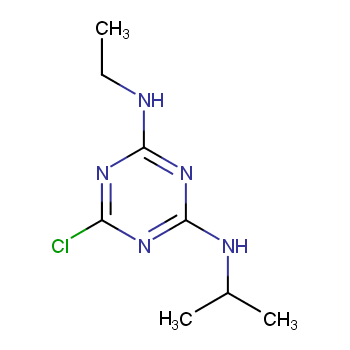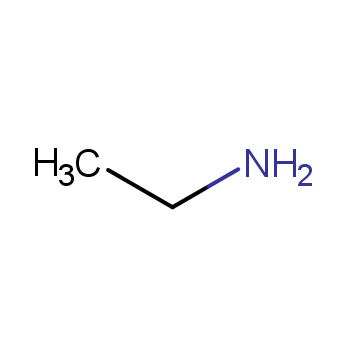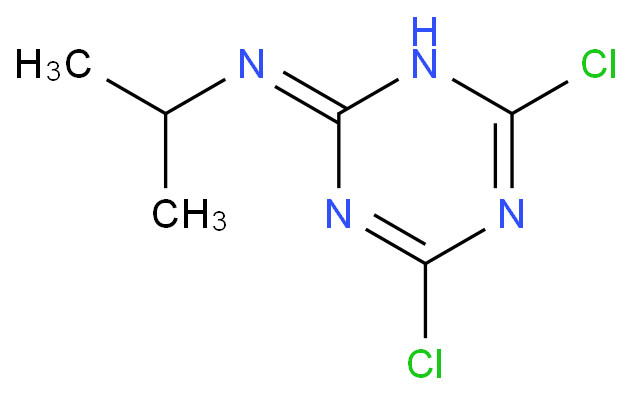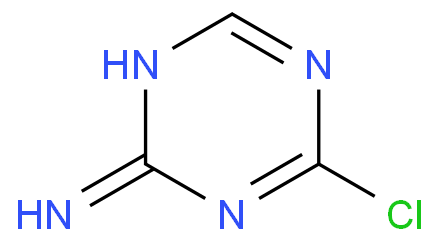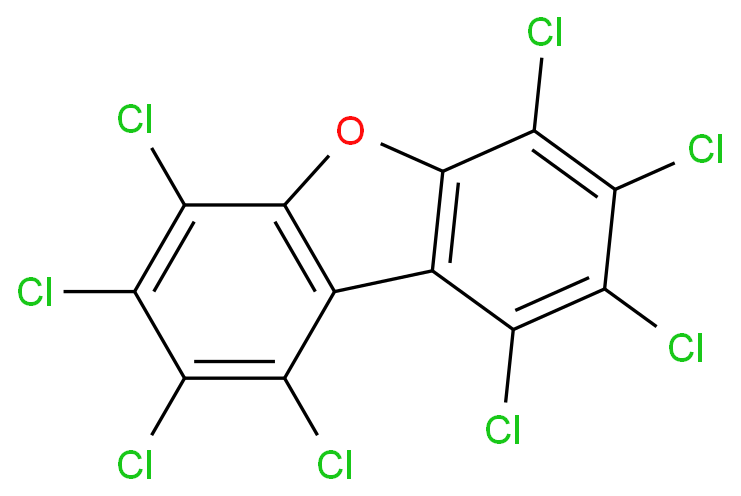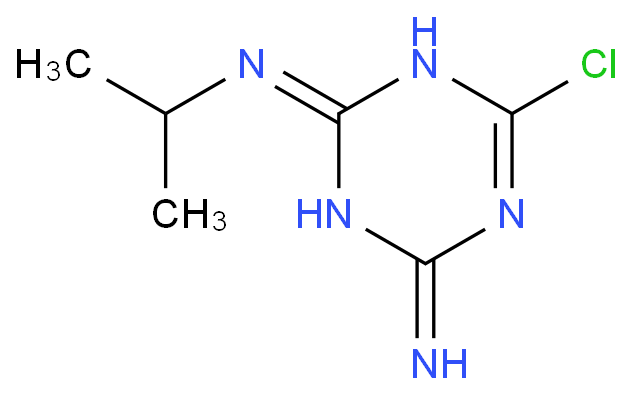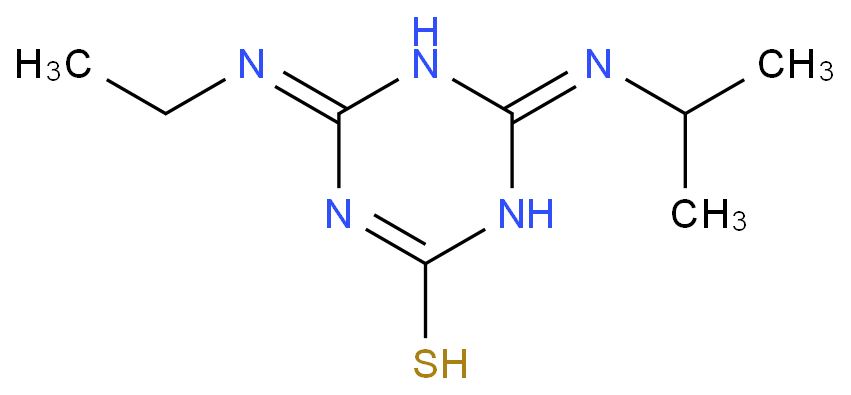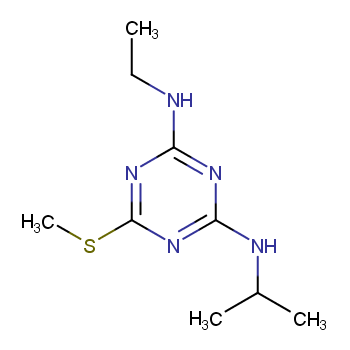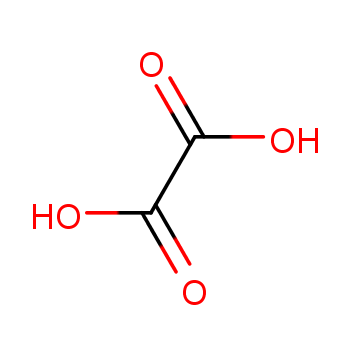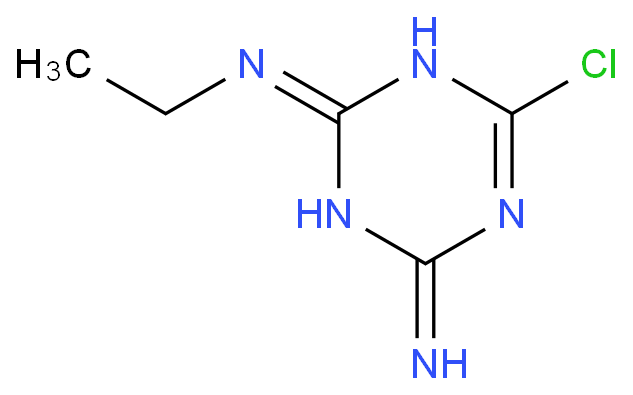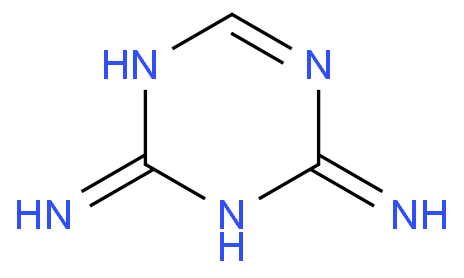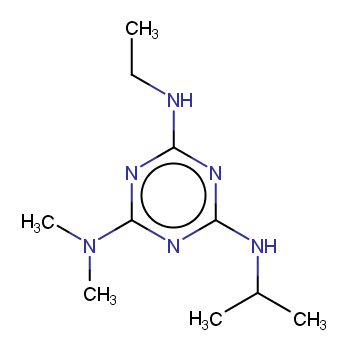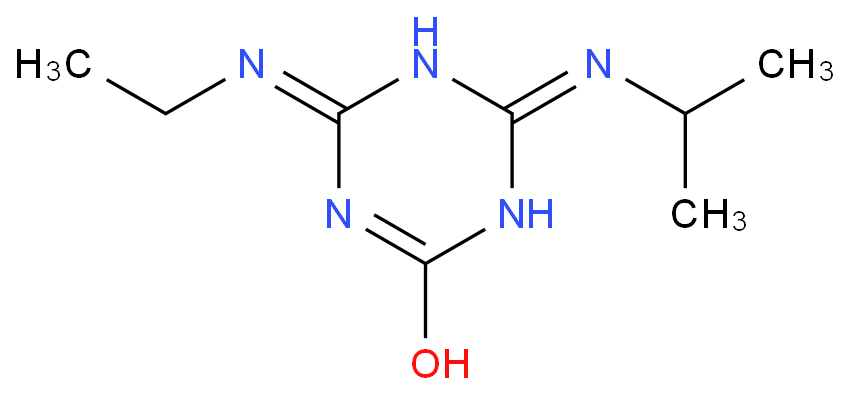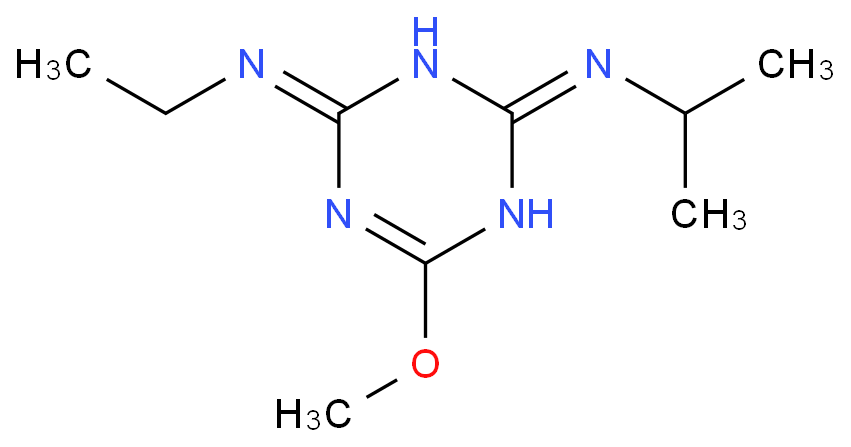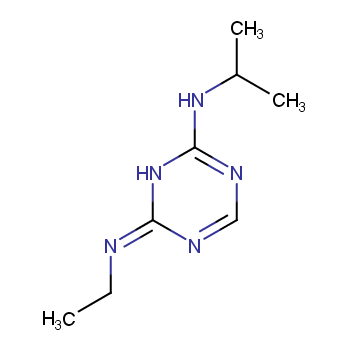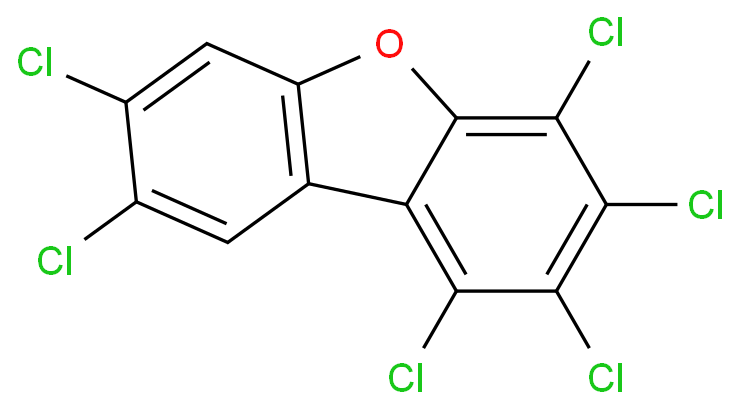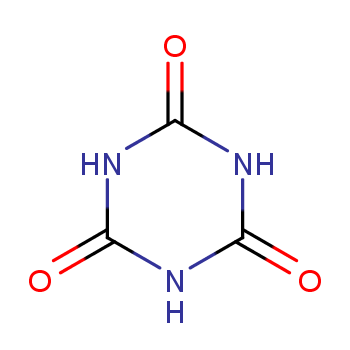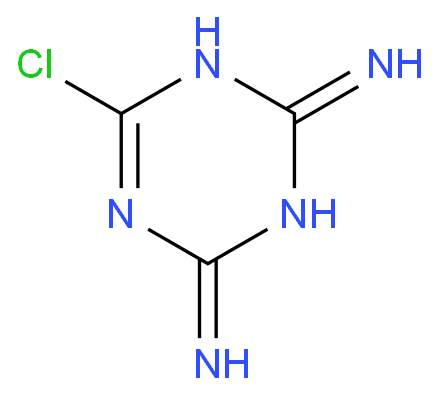1.Identification
1.1 GHS Product identifier
| Product name | atrazine |
|---|
1.2 Other means of identification
| Product number | - |
|---|---|
| Other names | 2-Chloro-4-ethylamino-6-isopropylamino-1,3,5-triazine |
1.3 Recommended use of the chemical and restrictions on use
| Identified uses | For industry use only. Benzidines/Aromatic amines, Pesticides (chemicals used for killing pests, such as rodents, insects, or plants) |
|---|---|
| Uses advised against | no data available |
1.4 Supplier's details
| Company | WWW.GuideChem.COM |
|---|---|
| Address | 8F, Block C, No.3 Building, Zijin Plaza, No.701, Gudun Road, Hangzhou, Zhejiang 310030, China |
| Telephone | +86-571-89739798 |
| Fax | 86(21)54365166 |
1.5 Emergency phone number
| Emergency phone number | +86-571-89739798 |
|---|---|
| Service hours | Monday to Friday, 9am-5pm (Standard time zone: UTC/GMT +8 hours). |
2.Hazard identification
2.1 Classification of the substance or mixture
Skin sensitization, Category 1
Specific target organ toxicity \u2013 repeated exposure, Category 2
Hazardous to the aquatic environment, short-term (Acute) - Category Acute 1
Hazardous to the aquatic environment, long-term (Chronic) - Category Chronic 1
2.2 GHS label elements, including precautionary statements
| Pictogram(s) |   |
|---|---|
| Signal word | Warning |
| Hazard statement(s) | H317 May cause an allergic skin reaction H410 Very toxic to aquatic life with long lasting effects |
| Precautionary statement(s) | |
| Prevention | P261 Avoid breathing dust/fume/gas/mist/vapours/spray. P272 Contaminated work clothing should not be allowed out of the workplace. P280 Wear protective gloves/protective clothing/eye protection/face protection. P260 Do not breathe dust/fume/gas/mist/vapours/spray. P273 Avoid release to the environment. |
| Response | P302+P352 IF ON SKIN: Wash with plenty of water/... P333+P313 If skin irritation or rash occurs: Get medical advice/attention. P321 Specific treatment (see ... on this label). P362+P364 Take off contaminated clothing and wash it before reuse. P314 Get medical advice/attention if you feel unwell. P391 Collect spillage. |
| Storage | none |
| Disposal | P501 Dispose of contents/container to ... |
2.3 Other hazards which do not result in classification
none
3.Composition/information on ingredients
3.1 Substances
| Chemical name | Common names and synonyms | CAS number | EC number | Concentration |
|---|---|---|---|---|
| atrazine | atrazine | 1912-24-9 | none | 100% |
4.First-aid measures
4.1 Description of necessary first-aid measures
General advice
Consult a physician. Show this safety data sheet to the doctor in attendance.
If inhaled
Fresh air, rest.
In case of skin contact
Rinse and then wash skin with water and soap.
In case of eye contact
Rinse with plenty of water (remove contact lenses if easily possible). Refer for medical attention.
If swallowed
Rinse mouth. Refer for medical attention .
4.2 Most important symptoms/effects, acute and delayed
Irritates eyes and skin. If ingested, irritates mouth and stomach. (USCG, 1999)
4.3 Indication of immediate medical attention and special treatment needed, if necessary
Skin decontamination. Skin contamination should be treated promptly by washing with soap and water. Contamination of the eyes should be treated immediately by prolonged flushing of the eyes with large amounts of clean water. If dermal or ocular irritation persists, medical attention should be obtained without delay. /Other herbicides/
5.Fire-fighting measures
5.1 Extinguishing media
Suitable extinguishing media
Use dry chemical, foam, or CO2 extinguisher media. Wear full protective clothing and self-contained breathing apparatus. Evacuate nonessential personnel from the area to prevent human exposure to fire, smoke, fumes or products of combustion. Prevent use of contaminated buildings, area, and equipment until decontaminated. /Atrazine 4L Herbicide/
5.2 Specific hazards arising from the chemical
Special Hazards of Combustion Products: Irritating hydrogen chloride and toxic oxides of nitrogen may be formed. (USCG, 1999)
5.3 Special protective actions for fire-fighters
Wear self-contained breathing apparatus for firefighting if necessary.
6.Accidental release measures
6.1 Personal precautions, protective equipment and emergency procedures
Use personal protective equipment. Avoid dust formation. Avoid breathing vapours, mist or gas. Ensure adequate ventilation. Evacuate personnel to safe areas. Avoid breathing dust. For personal protection see section 8.
6.2 Environmental precautions
Personal protection: particulate filter respirator adapted to the airborne concentration of the substance. Do NOT let this chemical enter the environment. Sweep spilled substance into covered containers. If appropriate, moisten first to prevent dusting. Carefully collect remainder. Then store and dispose of according to local regulations.
6.3 Methods and materials for containment and cleaning up
Wear chemical safety glasses or goggles, rubber gloves, waterproof boots, long sleeved shirt, long pants, hat and an NIOSH approved dust or pesticide respirator. For small spills, cover the spill with an absorbent material. Sweep up the material and place in an appropriate chemical waste container. Wash the spill area with water containing a strong detergent, absorb with an absorbent material, sweep up and place in a chemical waste container. Seal the container and dispose of in an approved manner. Rinse the spill area with water to remove any residue. Do not allow wash or rinse water to contaminate water supplies. /Atrazine 4L Herbicide/
7.Handling and storage
7.1 Precautions for safe handling
Avoid contact with skin and eyes. Avoid formation of dust and aerosols. Avoid exposure - obtain special instructions before use.Provide appropriate exhaust ventilation at places where dust is formed. For precautions see section 2.2.
7.2 Conditions for safe storage, including any incompatibilities
Provision to contain effluent from fire extinguishing. Separated from food and feedstuffs. Store in an area without drain or sewer access.Store the material in a well ventilated, secure area out of the reach of children and domestic animals. Do not store food, beverages or tobacco products in the storage area. Prevent eating, drinking, tobacco usage, adn cosmetic application in areas where there is a potential for exposure to the material. Always wash thoroughly after handling. /Atrazine 4L Herbicide/
8.Exposure controls/personal protection
8.1 Control parameters
Occupational Exposure limit values
Recommended Exposure Limit: 10 Hour Time-Weighted Average: 5 mg/cu m.
Biological limit values
no data available
8.2 Appropriate engineering controls
Handle in accordance with good industrial hygiene and safety practice. Wash hands before breaks and at the end of workday.
8.3 Individual protection measures, such as personal protective equipment (PPE)
Eye/face protection
Safety glasses with side-shields conforming to EN166. Use equipment for eye protection tested and approved under appropriate government standards such as NIOSH (US) or EN 166(EU).
Skin protection
Wear impervious clothing. The type of protective equipment must be selected according to the concentration and amount of the dangerous substance at the specific workplace. Handle with gloves. Gloves must be inspected prior to use. Use proper glove removal technique(without touching glove's outer surface) to avoid skin contact with this product. Dispose of contaminated gloves after use in accordance with applicable laws and good laboratory practices. Wash and dry hands. The selected protective gloves have to satisfy the specifications of EU Directive 89/686/EEC and the standard EN 374 derived from it.
Respiratory protection
Wear dust mask when handling large quantities.
Thermal hazards
no data available
9.Physical and chemical properties
| Physical state | colourless crystals or white powder |
|---|---|
| Colour | Colorless powder |
| Odour | Odorless |
| Melting point/ freezing point | 207\u00b0C(lit.) |
| Boiling point or initial boiling point and boiling range | 193\u00b0C(lit.) |
| Flammability | Noncombustible Solid, but may be mixed with flammable liquids.Combustible under specific conditions. Liquid formulations containing organic solvents may be flammable. Gives off irritating or toxic fumes (or gases) in a fire. |
| Lower and upper explosion limit / flammability limit | no data available |
| Flash point | 76\u00b0C(lit.) |
| Auto-ignition temperature | no data available |
| Decomposition temperature | no data available |
| pH | no data available |
| Kinematic viscosity | no data available |
| Solubility | In water:Slightly soluble. 0.007 g/100 mL |
| Partition coefficient n-octanol/water (log value) | log Kow = 2.61 |
| Vapour pressure | 0.00156mmHg at 25\u00b0C |
| Density and/or relative density | 1.187 |
| Relative vapour density | no data available |
| Particle characteristics | no data available |
10.Stability and reactivity
10.1 Reactivity
no data available
10.2 Chemical stability
Stable in neutral, slightly acidic or basic media
10.3 Possibility of hazardous reactions
Nonflammable.ATRAZINE undergoes slow hydrolysis at 70\u00b0C under neutral conditions. Hydrolysis is more rapid in acidic or alkaline conditions. Forms salts with acids .
10.4 Conditions to avoid
no data available
10.5 Incompatible materials
Strong acids, strong bases.
10.6 Hazardous decomposition products
Hazardous decomposition products may include but are not limited to carbon monoxide, hydrogen cyanide, acetonitrile. /Atrazine 4L Herbicide/
11.Toxicological information
Acute toxicity
- Oral: LD50 Mouse oral >3992 mg/kg bw
- Inhalation: LC50 Rat inhalation >5800 mg/cu m 4hr
- Dermal: LD50 Rat percutaneous >3100 mg/kg
Skin corrosion/irritation
no data available
Serious eye damage/irritation
no data available
Respiratory or skin sensitization
no data available
Germ cell mutagenicity
no data available
Carcinogenicity
Cancer Classification: Not Likely to be Carcinogenic to Humans
Reproductive toxicity
no data available
STOT-single exposure
no data available
STOT-repeated exposure
no data available
Aspiration hazard
no data available
12.Ecological information
12.1 Toxicity
- Toxicity to fish: LC50; Species: Lepomis macrochirus (Bluegill) weight 0.6 g; Condtions: freshwater, static, 22\u00b0C, pH 7.1, hardness 43 mg/L CaCO3; Concentration: 48000 ug/L for 24 hr (95% confidence interval: 42000-55000 ug/L) /43% purity
- Toxicity to daphnia and other aquatic invertebrates: EC50; Species: Daphnia magna (Water Flea); Condtions: freshwater, flow through; Concentration: 49000 ug/L for 48 hr; Effect: intoxication, immobilization /80% purity, wettable powder formulation
- Toxicity to algae: EC50; Species: Anabaena inaequalis (Blue-Green Algae), 6.5x 10+4 cells/mL; Condtions: freshwater, static; Concentration: 55000 ug/L for 2 hr; Effect: physiology, nitrogen fixation
- Toxicity to microorganisms: no data available
12.2 Persistence and degradability
AEROBIC: An addition of fly ash up to 0.5% in a sandy clay loam results in increased degradation of atrazine by 13.3% on the average; the same amount of fly ash in clay soil increases atrazine degradation by 9.0%(1). The half-life of atrazine at 25\u00b0C in wet (and dry) Colorado loam soil, New York sandy loam soil, and Mississippi silt loam was determined to be 30 (90), 28 (55), and 35 (78) days respectively(2). The percent atrazine remaining from rhizosphere and edaphosphere (non-vegetated) soil samples collected at an agrochemicals dealership in Iowa was determined to be approximately 55% in the rhizosphere and 75% in the edaphosphere, suggesting that the microbial activity of Kochia sp in the rhizosphere soil increased atrazine degradation(3). Atrazine was found to exhibit a half-life of about 30 days in soil samples collected from the top surface (10 cm) from the Ebro delta, Tarragona, Spain between 1989 and 1991; deethyl atrazine was the major degradate formed, with deisopropylatrazine detected in one sample(4). Degradation studies of atrazine in subsoils from an Atlantic coastal plain watershed revealed 13.3 to 25.0% carbon dioxide evolution from sandy loam soils, indicating that atrazine was not appreciably mineralized in the soils(5). Atrazine had half-lives in the range of 20-360 days, observed in laboratory studies conducted with loamy soil from a corn field in Bologna, Italy(6). The shortest half-lives were observed for soils inoculated at temperatures of 35\u00b0C, while the longest half-lives observed occurred at 5\u00b0C(6). Experiments with s-triazine-adapted Colorado soil (35.2% sand, 28% silt, 36.8% clay, 19 g C/kg organic matter and pH 7.9) had atrazine degradation half-lives of 2.0 to 28.2 days(7). Experiments with s-triazine-adapted Mississippi soil (15.8% sand, 47.2% silt, 36.7% clay, 13 g C/Kg organic matter and pH 6.67) had atrazine degradation half-lives of 0.8 to 5.6 days(7).
12.3 Bioaccumulative potential
The BCF of atrazine in various aquatic organisms is: bluegill sunfish, <2.1-12; whitefish fry, 4-5; brook trout, <0.27; fathead minnows, 0.9-2.1; mottled sculpin, 2.0; golden ide, 1.0; black bullhead, 0.3; fish, 11; annelids, 4; freshwater snail, 4-5; mayfly nymphs, 480; snails, 7.5; daphnids, 2.2-4.4; algae, 76; soil fungi and bacteria, 87-132(1). Experimental log BCF values of 2.0, 1.0, 0.9, 0.5 and 0.3 have been reported for atrazine in Cottus bairdi (mottled sculpin)(2), Leuciscus idus melanotos (golden ide)(3), Pimephales promelas (fathead minnow)(4), Coregonus fera (whitefish)(5) and Ictaluras melas (catfish)(6), respectively. In vivo sampling of juvenile rainbow trout (Oncorhynchus mykiss) resulted in BCF of 0.49 in muscle and 4.94 in adipose tissue(7). According to a classification scheme(8), these BCF values suggest bioconcentration in aquatic organisms is low to moderate(SRC). The BCF of atrazine in Daphnia magna ranged from 2.4 to 3.0 in natural European waters (13 rivers, 1 humic lake)(9).
12.4 Mobility in soil
The Koc of atrazine in loamy soil, calcareous clay, and high clay was determined to be 109.9, 80.0, and 88.9, respectively(1). The Koc values for atrazine in four Hawaii soils ranged from 54 to 150 mL/g(2). The Koc for a Zimmerman fine sand, a Verndale sandy loam, and a Waukegan silt loam, each with 9.6% water content, was determined to be 1164, 775, and 936, respectively(3). The Koc range for atrazine in salt marsh sediment was 64 to 546, indicating that atrazine undergoes negligible adsorption onto suspended sediments(4). The Koc of atrazine in Norfolk soil, Rion soil, Cape Fear soil, and Webster soil was determined to be 150-200, 84, 202, and 166, respectively(5). Atrazine had a reported mean Koc of 126.9 (range of 26 to 821) in 101 allophanic and non-allophanic surface soil samples collected throughout New Zealand(6). Koc values for three regions of Argentina were reported as 77 to 161(7). Koc values of two soils from Reunion Island, France were reported as 97 and 117(8). Atrazine had measured Koc values of 88 in vegetated filter strip soil (37.9% sand, 31.9% silt, 30.2% clay, 4.2% organic carbon, pH 7.6) and 92 in cultivated soil (36.8% sand, 29.5% silt, 33.7% clay, 2.5% organic carbon, pH 7.6)(9). According to a classification scheme(10), these Koc values suggest that atrazine is expected to have very high to slight mobility in soil, depending upon soil type(SRC). The rate constant for sorption and desorption of atrazine by organic soil at 25\u00b0C was determined to be 5.02X10-2/day (half-life = 13.8 days) for sorption and 0.1507/day (half-life = 4.6 days) for desorption(11). Atrazine sorption half-life ranged from 3.6 to 735 days and desorption half-life ranged from 1 to 11 days in slurries of a mineralized soil(12).
12.5 Other adverse effects
no data available
13.Disposal considerations
13.1 Disposal methods
Product
The material can be disposed of by removal to a licensed chemical destruction plant or by controlled incineration with flue gas scrubbing. Do not contaminate water, foodstuffs, feed or seed by storage or disposal. Do not discharge to sewer systems.
Contaminated packaging
Containers can be triply rinsed (or equivalent) and offered for recycling or reconditioning. Alternatively, the packaging can be punctured to make it unusable for other purposes and then be disposed of in a sanitary landfill. Controlled incineration with flue gas scrubbing is possible for combustible packaging materials.
14.Transport information
14.1 UN Number
| ADR/RID: UN3077 | IMDG: UN3077 | IATA: UN3077 |
14.2 UN Proper Shipping Name
| ADR/RID: ENVIRONMENTALLY HAZARDOUS SUBSTANCE, SOLID, N.O.S. |
| IMDG: ENVIRONMENTALLY HAZARDOUS SUBSTANCE, SOLID, N.O.S. |
| IATA: ENVIRONMENTALLY HAZARDOUS SUBSTANCE, SOLID, N.O.S. |
14.3 Transport hazard class(es)
| ADR/RID: 9 | IMDG: 9 | IATA: 9 |
14.4 Packing group, if applicable
| ADR/RID: III | IMDG: III | IATA: III |
14.5 Environmental hazards
| ADR/RID: yes | IMDG: yes | IATA: yes |
14.6 Special precautions for user
no data available
14.7 Transport in bulk according to Annex II of MARPOL 73/78 and the IBC Code
no data available
15.Regulatory information
15.1 Safety, health and environmental regulations specific for the product in question
| Chemical name | Common names and synonyms | CAS number | EC number |
|---|---|---|---|
| atrazine | atrazine | 1912-24-9 | none |
| European Inventory of Existing Commercial Chemical Substances (EINECS) | Listed. | ||
| EC Inventory | Listed. | ||
| United States Toxic Substances Control Act (TSCA) Inventory | Listed. | ||
| China Catalog of Hazardous chemicals 2015 | Not Listed. | ||
| New Zealand Inventory of Chemicals (NZIoC) | Listed. | ||
| Philippines Inventory of Chemicals and Chemical Substances (PICCS) | Listed. | ||
| Vietnam National Chemical Inventory | Listed. | ||
| Chinese Chemical Inventory of Existing Chemical Substances (China IECSC) | Listed. | ||
16.Other information
Information on revision
| Creation Date | Aug 11, 2017 |
|---|---|
| Revision Date | Aug 11, 2017 |
Abbreviations and acronyms
- CAS: Chemical Abstracts Service
- ADR: European Agreement concerning the International Carriage of Dangerous Goods by Road
- RID: Regulation concerning the International Carriage of Dangerous Goods by Rail
- IMDG: International Maritime Dangerous Goods
- IATA: International Air Transportation Association
- TWA: Time Weighted Average
- STEL: Short term exposure limit
- LC50: Lethal Concentration 50%
- LD50: Lethal Dose 50%
- EC50: Effective Concentration 50%
References
- IPCS - The International Chemical Safety Cards (ICSC), website: http://www.ilo.org/dyn/icsc/showcard.home
- HSDB - Hazardous Substances Data Bank, website: https://toxnet.nlm.nih.gov/newtoxnet/hsdb.htm
- IARC - International Agency for Research on Cancer, website: http://www.iarc.fr/
- eChemPortal - The Global Portal to Information on Chemical Substances by OECD, website: http://www.echemportal.org/echemportal/index?pageID=0&request_locale=en
- CAMEO Chemicals, website: http://cameochemicals.noaa.gov/search/simple
- ChemIDplus, website: http://chem.sis.nlm.nih.gov/chemidplus/chemidlite.jsp
- ERG - Emergency Response Guidebook by U.S. Department of Transportation, website: http://www.phmsa.dot.gov/hazmat/library/erg
- Germany GESTIS-database on hazard substance, website: http://www.dguv.de/ifa/gestis/gestis-stoffdatenbank/index-2.jsp
- ECHA - European Chemicals Agency, website: https://echa.europa.eu/

